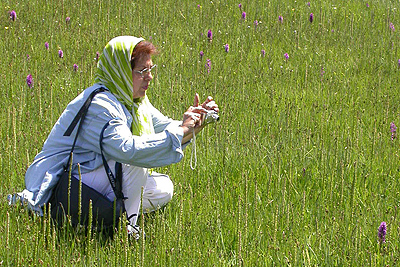Laugh, Cry, and a Flora

I think I'm going to present this botanical news in an order other than presented in the title - so as to be more "uplifting", like a Frank Capra film.
First, the flora.
CHECKLIST AND ATLAS OF THE VASCULAR FLORA OF WEST VIRGINIA
This 381-page printed document includes a series of completely revised lists of the vascular plants known to occur outside of cultivation in West Virginia and a dot map indicating from which counties each of the 2503 taxa is recorded.
But wait, there's more! You'll also get -
* a reference to names and classification of all the ferns, trees,wildflowers and other vascular plants and the counties in the state in which they occur;
* which species are native, introduced, adventive, or exotic;
* which are classified as wetland species, which may be invasive to natural areas;
* those needing further field work,
* those needing systematic study, and
* those tracked by the West Virginia Natural Heritage program as state rare.
Here's how to get yours!
Now, for the infuriating...
Again, US Fish and Wildlife does the bidding of their boss, the most unenvironmentally savvy President to ever walk the earth. May his days be filled with his own, personal global warming.
Fury sprouts over agency's failure to protect rare, local plant
from The Daily Sentinel
Raising the ire of conservationists, a rare plant that exists almost
entirely within areas that have been leased for oil and gas development in Mesa and Garfield counties will not be protected under the Endangered Species Act in the foreseeable future, the U.S. Fish and Wildlife Service announced Wednesday...
And a feel good story if there ever was one - how botany brings the people of the world together (see photo).
from The Berkleyan
A plant-based diet for small-planet diplomats
Can botanical exchanges between the U.S. and Iran play the peacemaking role that ping-pong did 30 years ago?
As measured by international time zones or teenage girls' hemlines, the Islamic Republic of Iran and the American West are worlds apart. Yet as viewed through the lens of geography, geology, or climate, the nation- state and western United States have worlds in common . sharing not only the same northern latitudes but, in significant measure, important topographical features (large central plateaus, with interior-draining basins, lying between mountain ranges), Mediterranean climates, active earthquake faults, and (due in large part to these other similarities) a notably rich flora, with hundreds of plant species in common...
Can't you just feel the love?





1 comment:
Don’t hold your breath but plans to go early summer are still moving forward!
Post a Comment